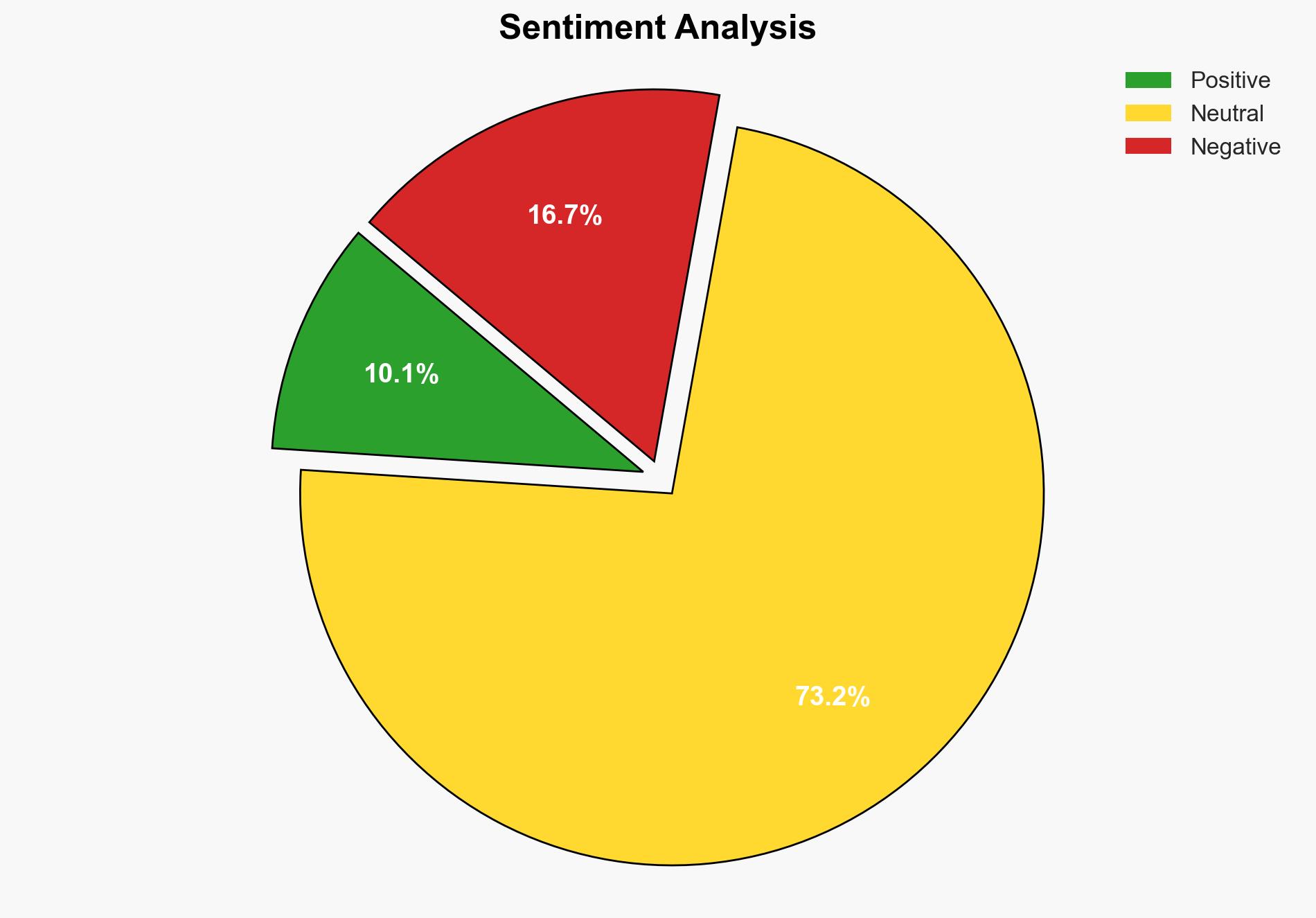FAA ‘permanently restricting’ Washington helicopter traffic after fatal midair collision near DC airport – Fox News
Published on: 2025-03-15
Intelligence Report: FAA ‘permanently restricting’ Washington helicopter traffic after fatal midair collision near DC airport – Fox News
1. BLUF (Bottom Line Up Front)
The Federal Aviation Administration (FAA) has implemented permanent restrictions on non-essential helicopter operations near Ronald Reagan Washington National Airport following a fatal midair collision in January. This decision aligns with recommendations from the National Transportation Safety Board (NTSB) to enhance aviation safety by eliminating mixed helicopter and fixed-wing traffic in the area. The new guidelines aim to reduce the risk of future incidents by closing specific helicopter routes and evaluating alternative paths.
2. Detailed Analysis
The following structured analytic techniques have been applied for this analysis:
General Analysis
The FAA’s decision follows a deadly collision involving a commercial plane and an Army Black Hawk helicopter over the Potomac River, resulting in fatalities. The NTSB identified the proximity of helicopter routes to the airport’s final approach path as an intolerable risk. The FAA’s directive permanently restricts non-essential helicopter operations and closes the route between Hain Point and the Wilson Bridge. The agency will also assess alternative helicopter routes and limit visual separation for certain operations.
3. Implications and Strategic Risks
The restrictions could have significant implications for emergency response operations, law enforcement, and presidential transport, which may require urgent helicopter missions. The changes may also affect regional air traffic management and could lead to increased congestion in other airspace areas. The decision underscores the need for enhanced communication and coordination among air traffic control and military operations to prevent similar incidents.
4. Recommendations and Outlook
Recommendations:
- Enhance communication protocols between air traffic control and military operations to prevent miscommunication.
- Invest in advanced air traffic management technologies to improve safety and efficiency.
- Conduct regular safety audits and risk assessments for helicopter routes near high-traffic airports.
Outlook:
In the best-case scenario, the new restrictions will significantly reduce the risk of midair collisions and improve overall aviation safety. In the worst-case scenario, the restrictions could lead to operational challenges for emergency services and increased congestion in alternative airspace. The most likely outcome is a balanced improvement in safety with manageable operational adjustments.
5. Key Individuals and Entities
The report mentions significant individuals and organizations, including Jennifer Homendy, Sean Duffy, and Louis Casiano. The FAA and NTSB are the primary entities involved in the implementation and recommendation of these safety measures.





